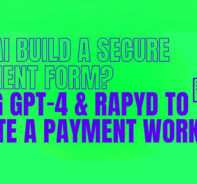For marketplaces looking to receive payment from customers or pay their sellers locally or overseas, the ability to easily collect and disburse funds in your user’s preferred method is a constant challenge. With global growth comes new regulatory, compliance and integration demands, which compound on product, IT and development resources. The result is that many firms default to push-to-card methods for cross-border payouts and payments, which in many cases are not their customers’ or sellers’ preferred method.
When it comes to cross-border payments, what works in the US or Brazil doesn’t always translate to how Indonesians, Singaporeans or even Brits bank. While some global payment standards have offered a unified experience for banks, notably ISO 20022, the implementation models to support it can be quite cumbersome. These disparate banking frameworks offer a variety of experiences, costs, regulatory challenges and technical pitfalls, which are confusing for any business to try and navigate for a single country, let alone globally.
Scaling an Alternative Real-Time Payments Platform
Never has an API driven fintech architecture been more critical for businesses looking to leverage real-time bank processing capabilities. According to Capgemini, global non-cash transactions grew to $539 billion in 2016-2017, a 12% surge and the highest in the past two decades.1 While card processing has driven the lion’s share of this volume, emerging markets where consumer and merchant preferences play a major role in dictating payment success increasingly leverage non-card payment alternatives. Whether businesses have outrightly rejected supporting cards, or a country’s culture simply doesn’t embrace a card-carrying mentality, businesses are realizing a multi-payment method solution is required to ensure successful customer and seller experiences.
As countries leaned into payment innovation over the last several years, the number of countries supporting real-time bank payment schemes grew to 54, up from 40 in 2018.2 This surge in real-time payments translates to choices for marketplace customers, sellers and workers in how they want to pay and be paid.
Delivering Local Banking
Rapyd’s approach to building on legacy banking frameworks began with a simple premise: deliver a world-class, in-country banking experience, leaving out the jargon, outdated methods and take no short-cuts in the experience. At a business level, this translates to a predictable implementation model, structured to simplify the payment experience for that specific country.
Three Brief Examples of Rapyd Delivering on Local Banking Experiences:
- When in Brazil, a common bank payment may mean issuing a Boleto that can be paid with cash at a POS terminal or local bank branch, or online. Boletos are entirely Brazilian and deliver a tremendously powerful value proposition; issue an invoice that can be redeemed online or at a store. Delivering on Boleto has been a major milestone for our efforts in Brazil.
- When collecting funds in Mexico, Rapyd leverages SPEI to complete real-time payments and disbursements. For our customers, this means they can complete real-time payments or disbursements, leveraging their customers Clabe’s, bank account or payor cell phone number.
- When collecting funds in India, UPI offers the most reliable method that consumers have come to expect in their payment experience. Rapyd delivers real-time payments in India by not only enabling all payment networks (NEFT, IMPS, RTGS), but ensures Customers have the flexibility to deliver a payment experience that fits their business model.
While these are just a few of the local payment experiences we’ve enabled globally, Rapyd continues to see market validation with clients going live across several new markets. Offering alternative payment options like real-time bank transfers doesn’t have to translate to a business handing off their checkout experience to a third party. Nor does it mean that a business should hire a team of payment experts to figure out how to support cross-border bank payments or payouts. There’s a better way to facilitate global commerce on two-sided marketplace enterprises.
Contact us to learn more today or get started by creating an account.
Sources:
1. “World Payments Report, 2019” – Capgemini.
2. “Number of Real-time Payment Systems Continues to Grow Globally, FIS Report Shows” FIS Global. https://www.fisglobal.com/about-us/media-room/press-release/2019/number-of-real-time-payment-systems-continues-to-grow-globally-fis-report-shows
Subscribe Via Email
Thank You!
You’ve Been Subscribed.



